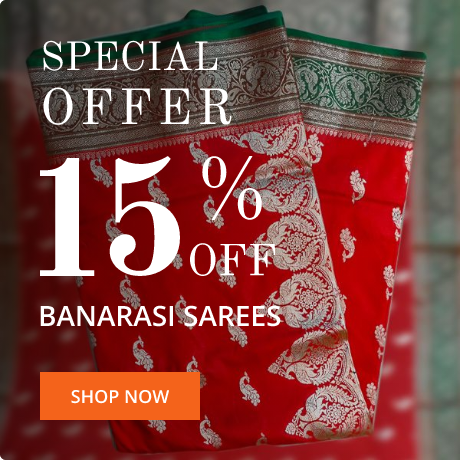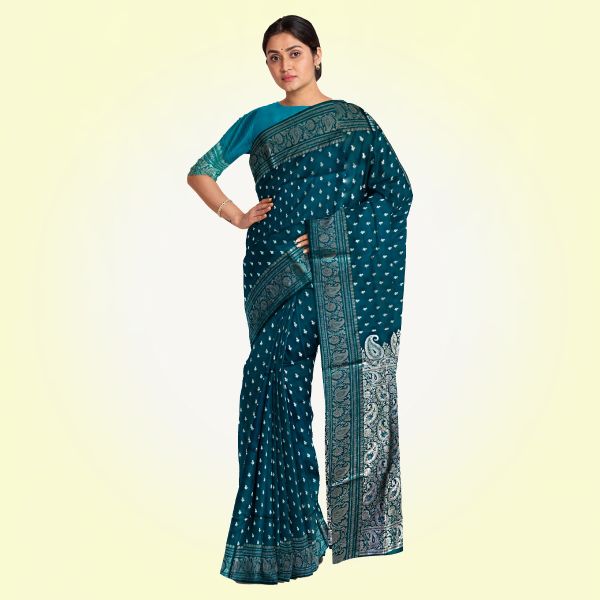Expert Tips on Identifying Authentic Banarasi Cotton Sarees

Banarasi Cotton sarees have long been known for their intricately woven designs reflecting India’s rich heritage and culture. With its origin deeply rooted in undivided Bharat’s artistic expressions, the much-famed designs enjoys royalty and marks a unique presence in weddings, celebrity functions, religious festivals, and more.
To this day, different types of Banarasi sarees depend on how you wish to categorize them. Based on designs, Banarasi sarees are classified in 5 different types - Jangla, Tanchoi, CutWork, Tissue, Butidar
Now that we know the Genuine Label
An original Banarasi saree comes with a label or tag that certifies its authenticity. These genuine sarees often include unique serial numbers, the names of the producer or weaver, and other identifying details. Some labels may also feature holograms or security measures to prevent counterfeiting. Always look for these authentic tags when making your purchase to ensure you’re investing in a true Banarasi saree.
Authentic Banarasi sarees are meticulously handmade, showcasing symmetrical patterns and minor imperfections that highlight the exceptional craftsmanship involved. These slight irregularities in motif size and weaving inconsistencies, especially in the pallu, which often has a design distinct from the saree's body, are signs of a genuine product. When purchasing, it’s advisable to carefully inspect for these handmade details.
A genuine Banarasi saree is crafted from luxurious, high-quality silk, known for its smooth, supple texture and the distinctive crisp, rustling sound it makes when moved. Be cautious of synthetic imitations that try to pass as silk. The authentic fabric should feel sumptuous and have a certain weight, reflecting its premium quality.
Banarasi sarees are prized for their unique weaving techniques and superb craftsmanship, which naturally command a significant price. If a saree is being offered at a much lower price than others in the market, it should raise suspicions. While price can be an indicator of legitimacy, it shouldn’t be the sole factor in your decision-making process. Always cross-check other authenticity markers before finalizing your purchase.
Given the prevalence of counterfeit Banarasi sarees, it’s crucial to purchase from reputable suppliers who have a documented track record of authenticity. These trusted sellers provide detailed information about the saree's origin, weaving process, and quality guarantees, ensuring you make a secure purchase. Be wary of vendors who dodge questions or pressure you into making quick decisions, as these are red flags in the buying process.
Conclusion
Even though there are numerous duplicate Banarasi cotton sarees circulating in the market, we can still identify most of the authentic ones by following these tips so that we don’t waste our money and time on duplicate products. Investing in an original Banarasi saree not only ensures you own a piece of India’s rich cultural heritage but also supports the artisans who keep this timeless tradition alive. Always choose authenticity, and wear your heritage with pride.



